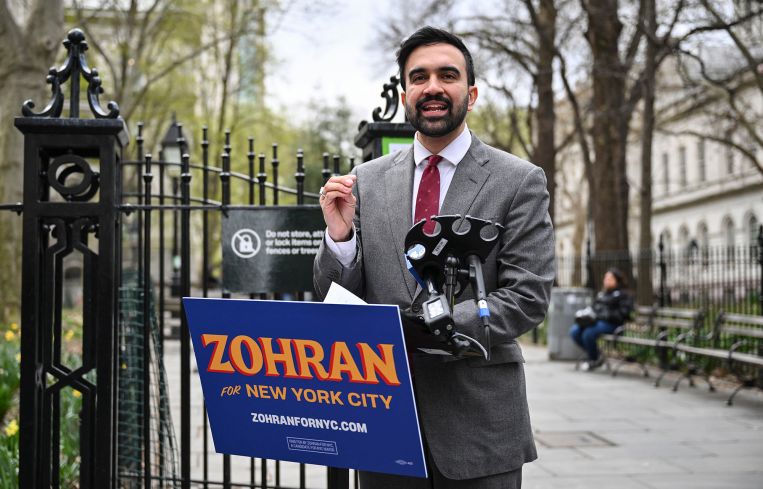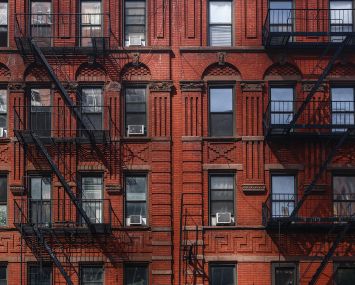New York City Multifamily Deal Activity Will Soon Spike — Even If Mamdani Wins
Beneath the noise, the fundamentals of this market have been gaining real momentum
By Lev Mavashev October 27, 2025 9:28 am
reprints
If you’ve been doing deals in New York long enough, you know how the city works: After every election, the market exhales, recalibrates, and gets back to business. Right now, we’re in that familiar “hold-your-breath” phase. Bid/ask spreads are stretched, a few deals are slipping into next quarter, and the noise feels louder than the numbers. That’s not weakness — it’s uncertainty. And uncertainty is peaking right now, not later.
Transaction activity will jump sharply in the first quarter of 2026 and pricing will begin to firm, even if Zohran Mamdani wins City Hall. The election will pass, the city will wake up, and deal-makers will remember what they already know: New York always finds its footing faster than anyone expects.
What we’re seeing today isn’t deterioration — it’s hesitation. Political cycles almost always slow decision-making. Investors and owners defer discretionary moves when the value of waiting feels higher than the value of acting. That’s not new. It’s how capital behaves under policy uncertainty. The same pattern has played out in every major election cycle.

Beneath the noise, however, the fundamentals of this market have been gaining real momentum. So far in 2025, multifamily dollar volume climbed across each of the first three quarters. The first quarter registered $2.21 billion in trades, up 62 percent year-over-year. The volume of trades increased another 11 percent in the second quarter, and it advanced again in the third to $2.55 billion, up 14 percent from the quarter before and 17 percent year-over-year. Those are closed deals, not projections. If conversations have slowed lately, it’s the calendar talking. The election has taken the wheel — but only temporarily.
By the first quarter of 2026, I expect velocity to return in a meaningful way. The first reason is that the Federal Reserve is finally shifting from headwind to tailwind. In its September Summary of Economic Projections, the Fed’s median “appropriate” funds rate drops from 3.6 percent in 2025 to about 3.4 percent in 2026, with another step down in the near future. That directional clarity supports cap rate stability and allows lenders to price debt more efficiently.
The second factor is rent resilience. Manhattan, Brooklyn and northwest Queens continue to post tight leasing conditions, with bidding wars returning, concessions evaporating, and median rents above last year’s levels. Brooklyn’s monthly median rent, for instance, hit $3,925 in September, up 7.5 percent year-over-year. When achieved rents outperform asking rents for more than two years straight, it signals demand that equity investors can confidently underwrite.
Supply dynamics also favor owners. Ground-up starts have slowed nationwide, and New York’s pipeline has contracted more than any other major U.S. market. That means fewer completions through 2026 and 2027 — less new competition, a firmer rent floor, and a more predictable revenue base for multifamily assets.
Policy clarity is another overlooked driver. Albany has already codified the two biggest “unknowns” weighing on the market: the Good Cause Eviction law and the 485x Affordable Neighborhoods for New Yorkers program. Investors can now underwrite those with certainty. The uncertainty premium is gone, and the market can finally reprice risk based on rules rather than rhetoric.
Finally, global capital is re-risking New York again. Over the past year, we have watched foreign and institutional buyers return first to Manhattan and then expand into the boroughs. The $104.5 million trade at 210–220 East 22nd Street in Gramercy Park involved Japan’s Tokyu Land alongside local partners — a clear signal that international capital still views New York multifamily as a core allocation. At Alpha Realty, we’ve seen a marked uptick in international bidding and a wave of all-cash, low-leverage offers on quality free-market product. That level of conviction speaks volumes.
Now, let’s address the question everyone’s whispering about: What happens if Zohran Mamdani becomes New York’s next mayor? The answer is simpler than most think. The 2019 Housing Stability and Tenant Protection Act is state law. A mayor cannot repeal it or rewrite rent regulations. The Rent Guidelines Board, often cited as a risk factor, is composed of nine members representing diverse constituencies and operates through an evidentiary process with public hearings and votes. It’s not a lever that a mayor can be pulled unilaterally. A rent-freeze slogan might make headlines, but slogans don’t make policy.
Even in a Mamdani administration, most of the feared “unknowns” will revert to knowns by January. The markets will digest, lenders will recalibrate, and sellers will re-engage. The panic cycle will fade, just as it always does.
If you need proof that politics create only short-term jitters, look at what happened after the primary. Risk assets dipped when Mamdani secured the Democratic nomination in June, but normalized within days as investors refocused on the fundamentals. The same pattern will follow the general election. By the time we hit the new year, capital will flow again, and buyers and sellers will start meeting in the middle.
Over the past two years, we’ve watched the same story unfold in stages. Velocity returns first. Then pricing firms. Then cap rates compress. That cycle is already forming again. Owners who prepare their properties for a January launch — clean title, current diligence, and realistic rent-roll narratives under Good Cause — will capture the first wave of demand. Buyers who lock in rate optionality now will benefit when the Fed’s glide path improves debt proceeds early next year. Developers who underwrite conservatively under the new 485x framework will find themselves rewarded by the scarcity of new product on the market.
The bottom line is that peak fear is happening now. By the first quarter of 2026, the election will be behind us, rate visibility will be better, and underwriting will feel simpler, not harder. That’s when New York does what it always does: goes back to work.
Owners and investors weighing their next strategic move should realize that the time to start positioning is now. The window we’ve been waiting for isn’t years away — it’s just one calendar page ahead.
Lev Mavashev is the founder and principal of Alpha Realty, a New York brokerage focusing on multifamily.


